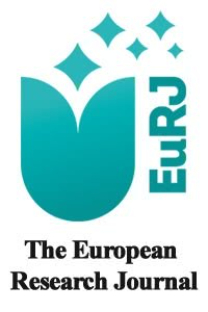Relevant muscle selection for needle electromyography examination in polio survivors
Relevant muscle selection for needle electromyography examination in polio survivors
___
- 1. Agre JC, Rodriquez AA, Tafel JS. Late effects of polio: critical review of the literature on neuromuscular function. Arch Phys Med Rehabil 1991;72:923-31.
- 2. Horstmann DM. Epidemiology of poliomyelitis and allied diseases – 1963. Yale J Biol Med 1963;36:5-26.
- 3. Bodian D. Histopathological basis of clinical findings in poliomyelitis. Am J Med 1949;6:563-78.
- 4. Kidd D, Williams AJ, Howard RS. Poliomyelitis. Postgrad Med J 1996;72:641-7.
- 5. Lo JK, Robinson LR. Postpolio syndrome and late effects of poliomyelitis. Part 1. Pathogenesis, biomechanical considerations, diagnosis, and investigations. Muscle Nerve 2018;58:751-9.
- 6. Jubelt B, Cashman NR. Neurological manifestations of the post-polio syndrome. Crit Rev Neurobiol 1987;3:199-200.
- 7. McComas AJ, Quartly C, Griggs RC. Early and late losses of motor units after poliomyelitis. Brain 1997;120:1415-21.
- 8. Stalberg E, Grimby G. Dynamic electromyography and muscle biopsy changes in a 4-year follow-up: study of patients with a history of polio. Muscle Nerve 1981;4:524-8.
- 9. Fidancı H, Öztürk İ, Köylüoğlu AC, Buturak Ş, Arlıer Z. Pattern of muscle involvement according to needle electromyography findings in clinically unaffected extremities of polio survivors with lower extremity weaknesses. J Surg Med 2019;3:635-9.
- 10. Kleyweg R, Van der Meche F, Schimtz P. Interobserver agreement in the assessment of muscle strength and functional abilities in Guillain-Barre syndrome. Muscle Nerve 1991;14:1103-9.
- 11. Aids to the examination of peripheral nervous system. Memorandum No.45. London, HMSO. 1976.
- 12. Chen S, Andary M, Buschbacher R, Del Toro D, Smith B, So Y, et al. Electrodiagnostic reference values for upper and lower limb nerve conduction studies in adult populations. Muscle Nerve 54: 371-7.
- 13. Daube JR, Rubin DI. Needle electromyography. Muscle Nerve 2009;39:244-70.
- 14. Sharrard WJ. The distribution of the permanent paralysis in the lower limb in poliomyelitis; a clinical and pathological study. J Bone Joint Surg Br 1955;37:540-58.
- 15. Kumar K, Kapahtia NK. The pattern of muscle involvement in poliomyelitis of upper limb. Int Orthop 1986;10:11-5.
- 16. Ravits J, Hallett M, Baker M, Nilsson J, Dalakas MC. Clinical and electromyographic studies of postpoliomyelitis muscular atrophy. Muscle Nerve 1990;13:667-74.
- 17. Şenol MG, Kaplan C, Ozdağ F, Saraçoğlu M. How long denervation take in poliomyelitis? Or is it a lifetime? Neurosci Rural Pract 2018;8:511-5.
- 18. Tarulli AW, Raynor EM. Lumbosacral radiculopathy. Neurol Clin 2007;25:387-405.
- ISSN: 2149-3189
- Yayın Aralığı: 6
- Başlangıç: 2015
- Yayıncı: Prusa Medikal Yayıncılık Limited Şirketi
İskender EKİNCİ, Hanişe ÖZKAN, Mitat BÜYÜKKABA, İrem KIRAÇ UTKU, Ahmet ÇINAR, Ramazan GÜVEN, Murat AKARSU, Abdulbaki KUMBASAR, Hafize UZUN, Onur TABAK
Ahmet Çınar, Ramazan Güven, Abdulbaki Kumbasar, Hafize Uzun, Ömür TABAK, İskender Ekinci, Hanise Özkan, Mitat Büyükkaba, İrem Kıraç Utku, Murat Akarsu
Yusuf Ata, Ahmet Burak Tatlı, Arda Aybars Pala, Mesut Engin, Temmuz Taner
Mustafa Yerli, Tahsin Olgun Bayraktar, Bülent Karslıoğlu, Yunus İmren, Süleyman Semih Dedeoğlu, Mustafa Çağlar Kır, Hakan Gürbüz, Ali Yüce
Hasan ÖLMEZ, Mustafa TOSUN, Edhem ÜNVER, Nurten ARSLAN IŞIK
Increase in scabies incidence: a retrospective cohort study
COVID-19 pneumonia with ARDS and secondary haemophagocytic lymphohistiocytosis: a case report
